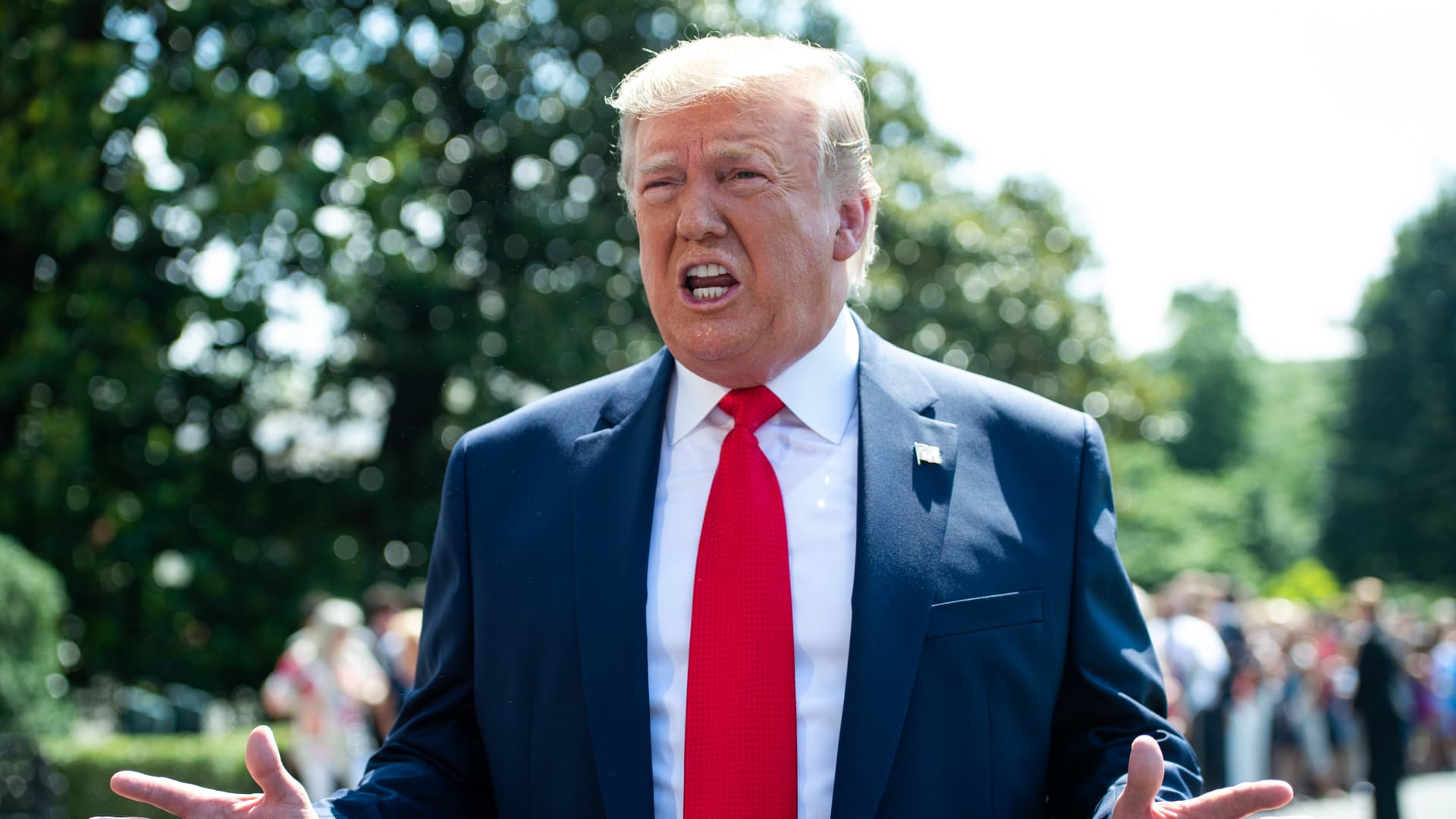Analysis Of Trump's Executive Order On Pharmaceutical Prices

Table of Contents
Key Provisions of the Executive Order
Trump's Executive Order on Pharmaceutical Prices aimed to lower drug costs through several key strategies.
International Price Index: Drug Price Negotiation and Reference Pricing
One of the most controversial proposals was linking domestic drug prices to lower prices in other countries, using an international price index. The administration argued that this drug price negotiation strategy, essentially reference pricing, would create significant savings. While countries like Canada and several EU nations were considered for comparison, the precise calculation method of the index remained somewhat opaque.
- Advantages Claimed: Reduced drug costs for consumers, increased affordability, and pressure on pharmaceutical companies to lower prices.
- Potential Drawbacks: The potential for reduced pharmaceutical innovation due to lower profit margins. Concerns were also raised about the impact on drug availability, as manufacturers might prioritize markets with higher reimbursement rates. Furthermore, the differing regulatory environments and healthcare systems in other countries made direct comparisons challenging and potentially misleading.
Transparency Requirements: Pharmaceutical Price Disclosure and Price Gouging
The executive order also emphasized drug pricing transparency, requiring greater disclosure of pricing information by pharmaceutical manufacturers and wholesalers.
- Information Required: The order sought to expose the complexities of drug pricing, mandating the disclosure of list prices, rebates, and other factors influencing the final cost paid by consumers.
- Responsibility for Disclosure: Pharmaceutical manufacturers were primarily responsible for providing this information.
- Achieving Transparency Goals: The extent to which this achieved its intended goal of curbing price gouging is debated, with some arguing that greater transparency alone did not significantly affect overall drug costs.
Drug Reimportation: Pharmaceutical Imports and FDA Regulations
The order also explored the possibility of drug reimportation, allowing the importation of cheaper drugs from other countries. This aimed to leverage lower drug prices in other nations to increase competition and affordability in the US market.
- Potential Benefits: Increased competition and lower prices for patients.
- Challenges: Significant FDA regulations regarding drug safety and efficacy posed hurdles to large-scale reimportation. Concerns about counterfeit medications and ensuring the quality and authenticity of imported drugs were major obstacles. The logistical complexities of implementing such a system across international borders also presented significant challenges.
Impact and Effectiveness of the Executive Order
Assessing the true impact of Trump's Executive Order on Pharmaceutical Prices requires a multifaceted analysis.
Changes in Drug Prices: Prescription Drug Prices and Drug Cost Reduction
While the executive order aimed for significant drug cost reduction, measuring its direct impact on prescription drug prices is difficult. There is no definitive, broad-based data demonstrating substantial price decreases directly attributable to the order. While some individual drug prices may have been affected by market forces and other factors influenced by the order's pressure, a substantial overall decrease was not widely observed.
Legal Challenges and Court Decisions: Legal Challenges, Court Cases, and Constitutionality
The executive order faced significant legal challenges, with pharmaceutical companies contesting several provisions, particularly those related to the international price index. These court cases largely centered on arguments regarding the order's constitutionality and its potential overreach into the regulatory powers of the FDA. The outcomes of these legal battles varied, with some aspects of the executive order facing setbacks in the courts.
Industry Response and Adaptations: Pharmaceutical Industry Response, Industry Lobbying, and Market Adjustments
The pharmaceutical industry responded to Trump's Executive Order on Pharmaceutical Prices with a mixture of lobbying efforts to challenge the order's provisions and strategic adjustments to their pricing and marketing strategies. While the extent of these adaptations is difficult to quantify, the industry undeniably reacted to the increased scrutiny and political pressure.
Long-Term Implications and Future of Pharmaceutical Pricing
The long-term effects of the executive order remain to be seen, but its legacy continues to shape the ongoing debate around pharmaceutical pricing.
Policy Implications: Healthcare Policy, Drug Pricing Reform, and the Future of Pharmaceuticals
Trump's Executive Order on Pharmaceutical Prices significantly influenced the discourse surrounding drug pricing reform and broader healthcare policy. It highlighted the limitations of solely relying on market forces to control drug costs and underscored the need for comprehensive strategies that address both affordability and pharmaceutical innovation. Its impact on future legislation and international approaches to drug pricing remains a subject of ongoing discussion and research.
Patient Access and Affordability: Patient Access, Medication Affordability, and Healthcare Costs
Whether the executive order improved patient access to affordable medications is debatable. While increased transparency might have helped some patients, the overall lack of significant price reductions suggests a limited direct impact on widespread medication affordability and healthcare costs.
Assessing the Legacy of Trump's Executive Order on Pharmaceutical Prices
Trump's Executive Order on Pharmaceutical Prices attempted to tackle the complex issue of high drug costs through a combination of price transparency, international price comparisons, and drug reimportation. While it raised awareness and spurred discussions about pricing practices, its success in substantially lowering drug prices remains questionable. The legal challenges and mixed industry response highlighted the difficulties of implementing such broad changes in a highly regulated and complex market. The order's lasting impact on healthcare policy and future drug pricing strategies will continue to unfold, demanding further research and analysis. We encourage you to explore additional resources on this topic and contact your representatives to advocate for effective drug pricing reforms that balance affordability and pharmaceutical innovation. Further research into the long-term consequences of Trump's Executive Order on Pharmaceutical Prices is vital to informing future policy decisions.

Featured Posts
-
 Celebrate Greece In Portola Valley The Grand Opening Of A New Taverna
May 13, 2025
Celebrate Greece In Portola Valley The Grand Opening Of A New Taverna
May 13, 2025 -
 Leonardo Di Caprio Hiding After Scathing Reviews
May 13, 2025
Leonardo Di Caprio Hiding After Scathing Reviews
May 13, 2025 -
 Rozselennya Romiv V Ukrayini Geografiya Kilkist Ta Faktori Vplivu
May 13, 2025
Rozselennya Romiv V Ukrayini Geografiya Kilkist Ta Faktori Vplivu
May 13, 2025 -
 Stuttgart Open Ostapenkos Stunning Win Against Sabalenka
May 13, 2025
Stuttgart Open Ostapenkos Stunning Win Against Sabalenka
May 13, 2025 -
 Braunschweiger Grundschule Entwarnung Nach Alarm
May 13, 2025
Braunschweiger Grundschule Entwarnung Nach Alarm
May 13, 2025
Latest Posts
-
 Fraenkische Schweiz Kirschbluete In Pretzfeld Steht Bevor Termine Und Tipps
May 14, 2025
Fraenkische Schweiz Kirschbluete In Pretzfeld Steht Bevor Termine Und Tipps
May 14, 2025 -
 Federer Honorary Starter At The 24 Hours Of Le Mans
May 14, 2025
Federer Honorary Starter At The 24 Hours Of Le Mans
May 14, 2025 -
 Caparros Regresa Al Sevilla Sustituye A Garcia Pimienta
May 14, 2025
Caparros Regresa Al Sevilla Sustituye A Garcia Pimienta
May 14, 2025 -
 Kirschbluete In Pretzfeld Die Fraenkische Schweiz Erwartet Besucher
May 14, 2025
Kirschbluete In Pretzfeld Die Fraenkische Schweiz Erwartet Besucher
May 14, 2025 -
 Erfolgreiche Wiederaufforstung 190 000 Baeume Im Nationalpark Saechsische Schweiz
May 14, 2025
Erfolgreiche Wiederaufforstung 190 000 Baeume Im Nationalpark Saechsische Schweiz
May 14, 2025
